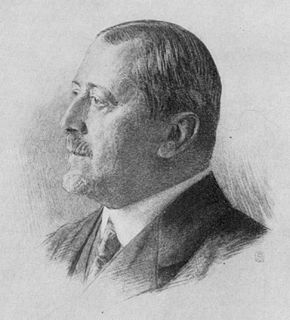 W
WPapyrology is the study of ancient literature, correspondence, legal archives, etc., as preserved in manuscripts written on papyrus, the most common form of writing material in the ancient civilizations of Egypt, Greece, and Rome. Papyrology includes both the translation and interpretation of ancient documents in a variety of languages and the care and preservation of rare papyrus originals.
 W
WCamillo Paderni, or Camillus Paderni, lived from c. 1715 to 1781. He was an illustrator, excavator, and curator at the Museum Herculanense, as part of King Charles VII of Naples royal Palace in Portici, and a Roman.
 W
WThe Derveni papyrus is an ancient Macedonian papyrus roll that was found in 1962. It is a philosophical treatise that is an allegorical commentary on an Orphic poem, a theogony concerning the birth of the gods, produced in the circle of the philosopher Anaxagoras. It was composed near the end of the 5th century BC, and "in the fields of Greek religion, the sophistic movement, early philosophy, and the origins of literary criticism it is unquestionably the most important textual discovery of the 20th century." The roll itself dates to around 340 BC, during the reign of Philip II of Macedon, making it Europe's oldest surviving manuscript. While interim editions and translations were published over the subsequent years, the manuscript as a whole was finally published in 2006.
 W
WThe Herculaneum papyri are more than 1,800 papyri found in the Herculaneum Villa of the Papyri, in the 18th century, carbonized by the eruption of Mount Vesuvius in AD 79.
 W
WThe Lille Stesichorus is a papyrus containing a major fragment of poetry usually attributed to the archaic lyric poet Stesichorus, discovered at Lille University and published in 1976. It has been considered the most important of all the Stesichorus fragments, confirming his role as an historic link between genres as different as the epic poetry of Homer and the lyric poetry of Pindar. The subject matter and style are typical of his work generally but not all scholars have accepted it as his work. The fragment is a narrative treatment of a popular myth, involving the family of Oedipus and the tragic history of Thebes, and thus it sheds light on other treatments of the same myth, such as by Sophocles in Oedipus Tyrannos and Aeschylus in Seven Against Thebes. The fragment is significant also in the history of colometry since it includes lyric verses that have been divided into metrical cola, a practice usually associated with the later career of Aristophanes of Byzantium.
 W
WThis list of ancient Egyptian papyri includes some of the better known individual papyri written in hieroglyphs, hieratic, demotic or in Greek. Excluded are papyri found abroad or containing Biblical texts which are listed in separate lists.
 W
WIn papyrology, Maas's law - named after classical scholar Paul Maas (1880–1964) - refers to the observation that columns in bookrolls often exhibit a forward tilt such that both edges of a column gradually move to the left as the column progresses. In other words, the bottommost line of the column of text is further to the left than the uppermost line. William Johnson has argued that this tilt was deliberate and formed part of the bookroll's design.
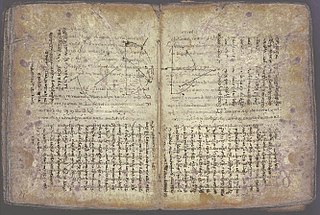 W
WOn Floating Bodies is a Greek-language work consisting of two books written by Archimedes of Syracuse, one of the most important mathematicians, physicists, and engineers of antiquity. On Floating Bodies, which is thought to have been written around 250 BC, survives only partly in Greek, the rest in medieval Latin translation from the Greek. It is the first known work on hydrostatics, of which Archimedes is recognized as the founder.
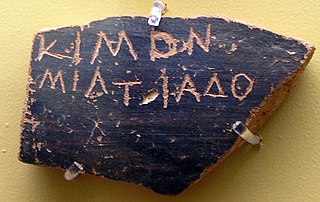 W
WAn ostracon is a piece of pottery, usually broken off from a vase or other earthenware vessel. In an archaeological or epigraphical context, ostraca refer to sherds or even small pieces of stone that have writing scratched into them. Usually these are considered to have been broken off before the writing was added; ancient people used the cheap, plentiful and durable broken pieces of pottery around them as convenient places to place writing for a wide variety of purposes, mostly very short inscriptions, but in some cases surprisingly long.
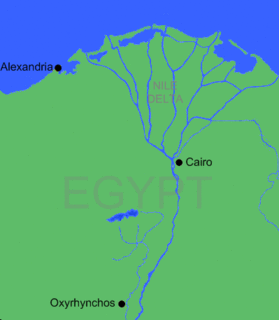 W
WOxyrhynchus is a city in Middle Egypt located about 160 km south-southwest of Cairo in Minya Governorate. It is also an archaeological site, considered one of the most important ever discovered. Since the late 19th century, the area around Oxyrhynchus has been excavated almost continually, yielding an enormous collection of papyrus texts dating from the Ptolemaic Kingdom and Roman Egypt. Among the texts discovered at Oxyrhynchus are plays of Menander, fragments from the Gospel of Thomas, and fragments from Euclid's Elements. They also include a few vellum manuscripts, and more recent Arabic manuscripts on paper.
 W
WThe Oxyrhynchus Papyri are a group of manuscripts discovered during the late nineteenth and early twentieth centuries by papyrologists Bernard Pyne Grenfell and Arthur Surridge Hunt at an ancient rubbish dump near Oxyrhynchus in Egypt.
 W
WPalaeography (UK) or paleography is the study of historic writing systems and the deciphering and dating of historical manuscripts, including the analysis of historic handwriting. It is concerned with the forms and processes of writing; not the textual content of documents. Included in the discipline is the practice of deciphering, reading, and dating manuscripts, and the cultural context of writing, including the methods with which writing and books were produced, and the history of scriptoria.
 W
WPapyrus is a material similar to thick paper that was used in ancient times as a writing surface. It was made from the pith of the papyrus plant, Cyperus papyrus, a wetland sedge. Papyrus can also refer to a document written on sheets of such material, joined together side by side and rolled up into a scroll, an early form of a book.
 W
WThe Petra papyri, also known as the Petra archive, is a corpus of papyrus documents written in Ancient Greek and dating to the 6th century AD that were discovered in the Byzantine Church at Petra in 1993. At some 140 papyrus rolls, the collection constitutes the largest corpus of ancient documents ever found in Jordan and stand as one of the most important papyrological finds outside of the massive yields taken from the sands of Egypt. Like the Herculaneum papyri, another major non-Egyptian find, the Petra rolls were preserved by virtue of their being carbonized in a fire, but most of the papyri were damaged beyond decipherment and only a few dozen preserve substantial, interpretable texts.
 W
WRustic capitals is an ancient Roman calligraphic script. Because the term is negatively connoted supposing an opposition to the more 'civilized' form of the Roman square capitals, Bernhard Bischoff prefers to call the script canonized capitals.
 W
WThe Schøyen Collection is one of the largest private manuscript collections in the world, mostly located in Oslo and London. Formed in the 20th century by Martin Schøyen, it comprises manuscripts of global provenance, spanning 5,000 years of history. It contains more than 13,000 manuscript items; the oldest is about 5,300 years old. There are manuscripts from 134 different countries and territories, representing 120 languages and 185 scripts.
 W
WTextual criticism is a branch of textual scholarship, philology, and of literary criticism that is concerned with the identification of textual variants, or different versions, of either manuscripts or of printed books. Such texts may range in dates from the earliest writing in cuneiform, impressed on clay, for example, to multiple unpublished versions of a 21st-century author's work. Historically, scribes who were paid to copy documents may have been literate, but many were simply copyists, mimicking the shapes of letters without necessarily understanding what they meant. This means that unintentional alterations were common when copying manuscripts by hand. Intentional alterations may have been made as well, for example the censoring of printed work for political, religious or cultural reasons.
 W
WUncial is a majuscule script commonly used from the 4th to 8th centuries AD by Latin and Greek scribes. Uncial letters were used to write Greek, Latin, and Gothic.
 W
WThe Papyrology Collection of the University of Michigan Library is an internationally respected collection of ancient papyrus and a center for research on ancient culture, language, and history. With over 7,000 items and more than 10,000 individual fragments, the Collection is by far the largest collection of papyrus in the country, and offers a glimpse into the everyday life and language of the ancient world. Of keen interest to historians, linguists, classicists, philosophers, archaeologists, as well as others, the collection includes biblical fragments, religious writings, public and private documents, private letters, and writings on astronomy, astrology, mathematics, and magic. The papyri span nearly two millennia of history, dating from about 1000 BC to AD 1000, with the majority dating from the third century BC to the seventh century AD.
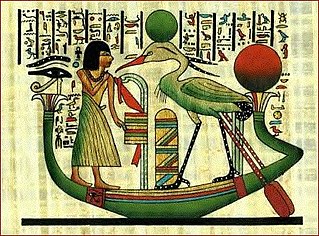 W
WWatercolor paper is paper or substrate onto which an artist applies watercolor paints, pigments or dyes. There are currently many types of paper available that are manufactured for the use with watercolors. Watercolor paper can be made of wood pulp exclusively, or mixed with cotton fibers. Pure cotton watercolor paper is also used by artists though it typically costs more than paper. It is also available as an acid-free medium to help its preservation. Watercolor paper can be described according to the manufacturing process. It can be hot pressed, cold pressed or rough. A number of companies sell watercolor papers, some of them with a long history of production.